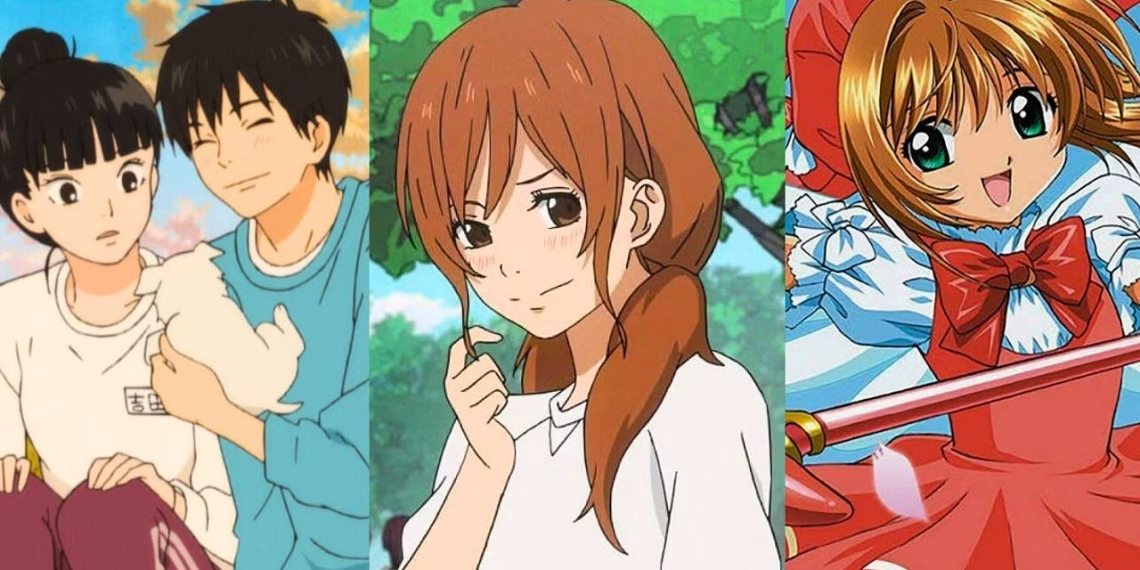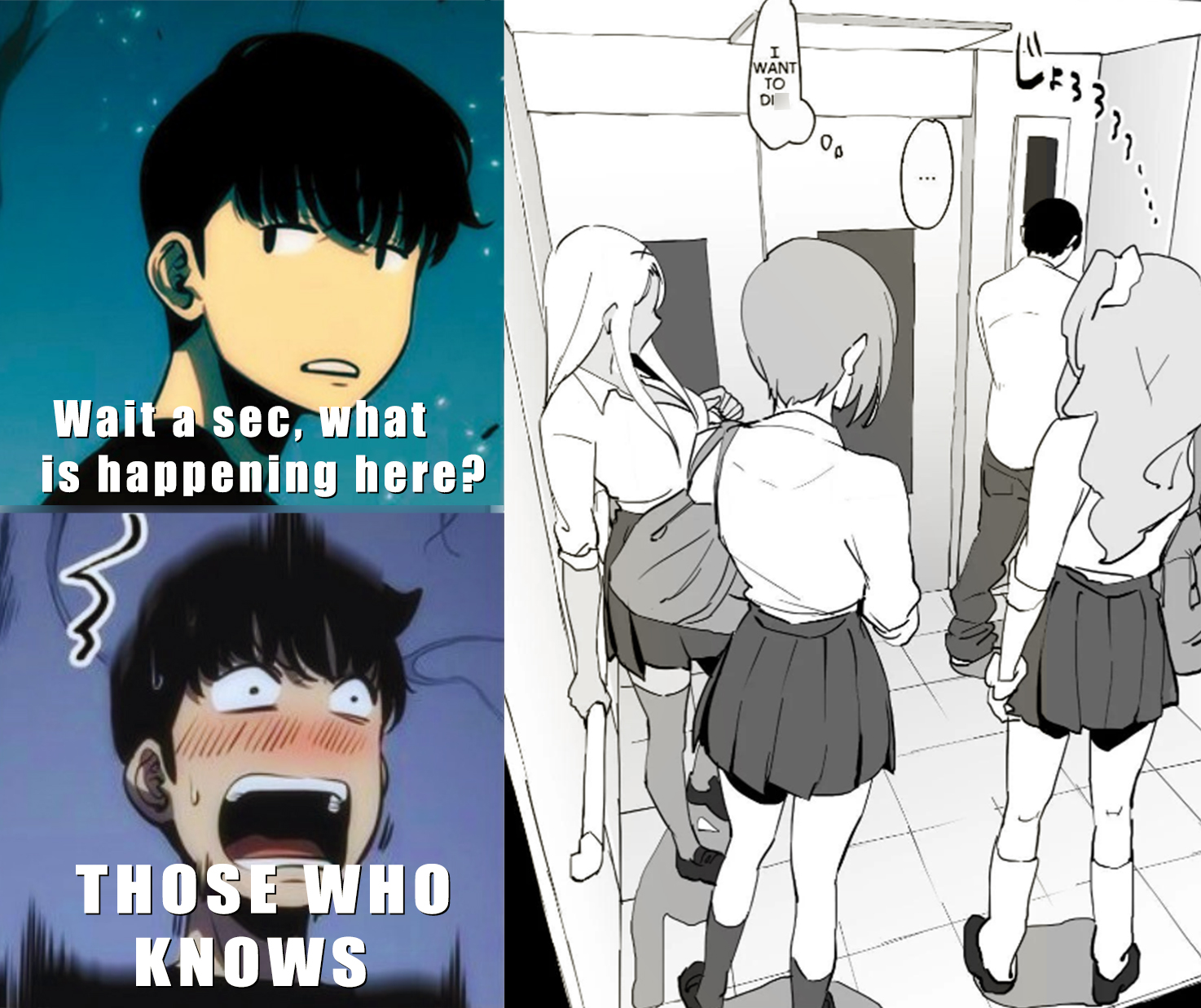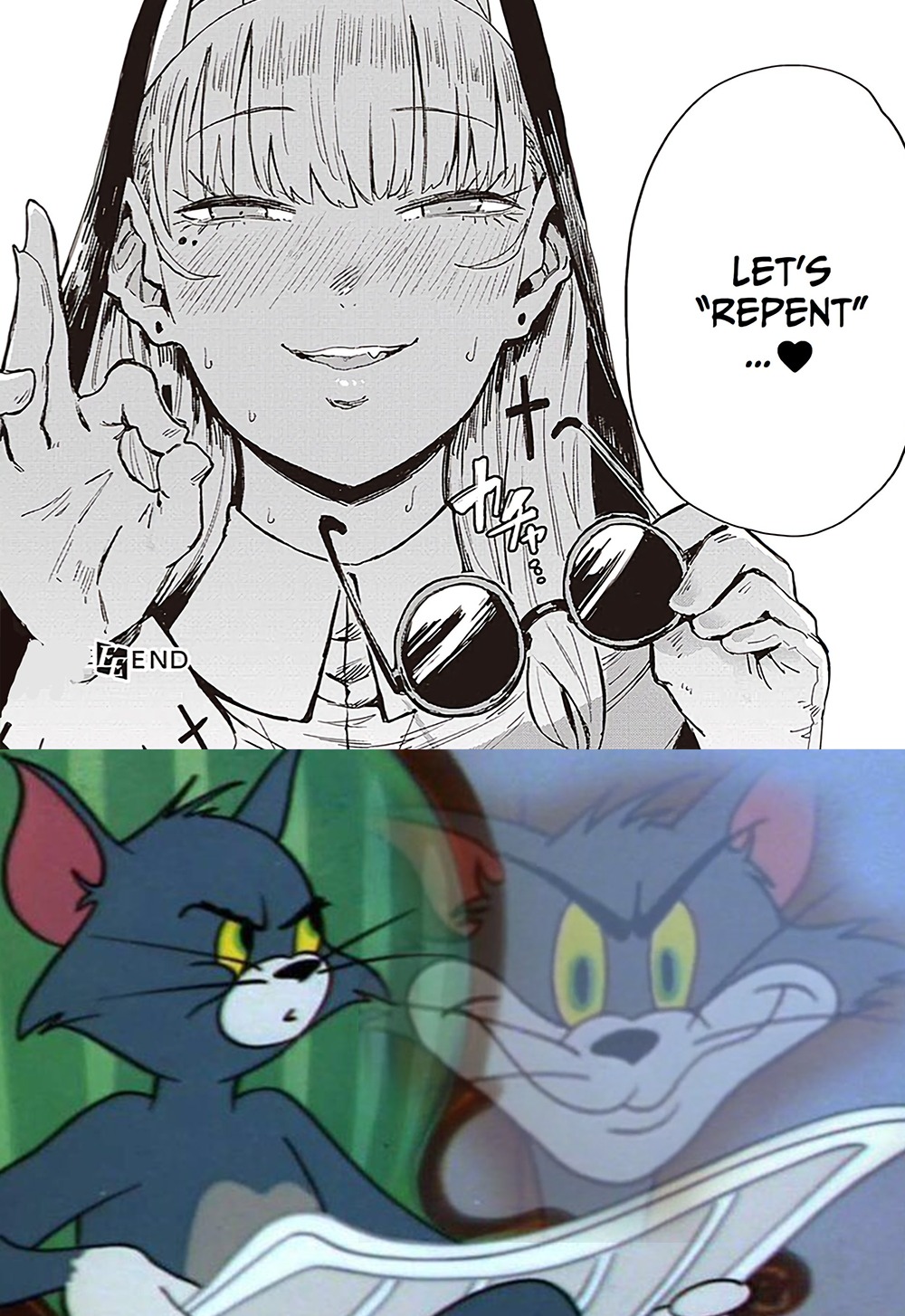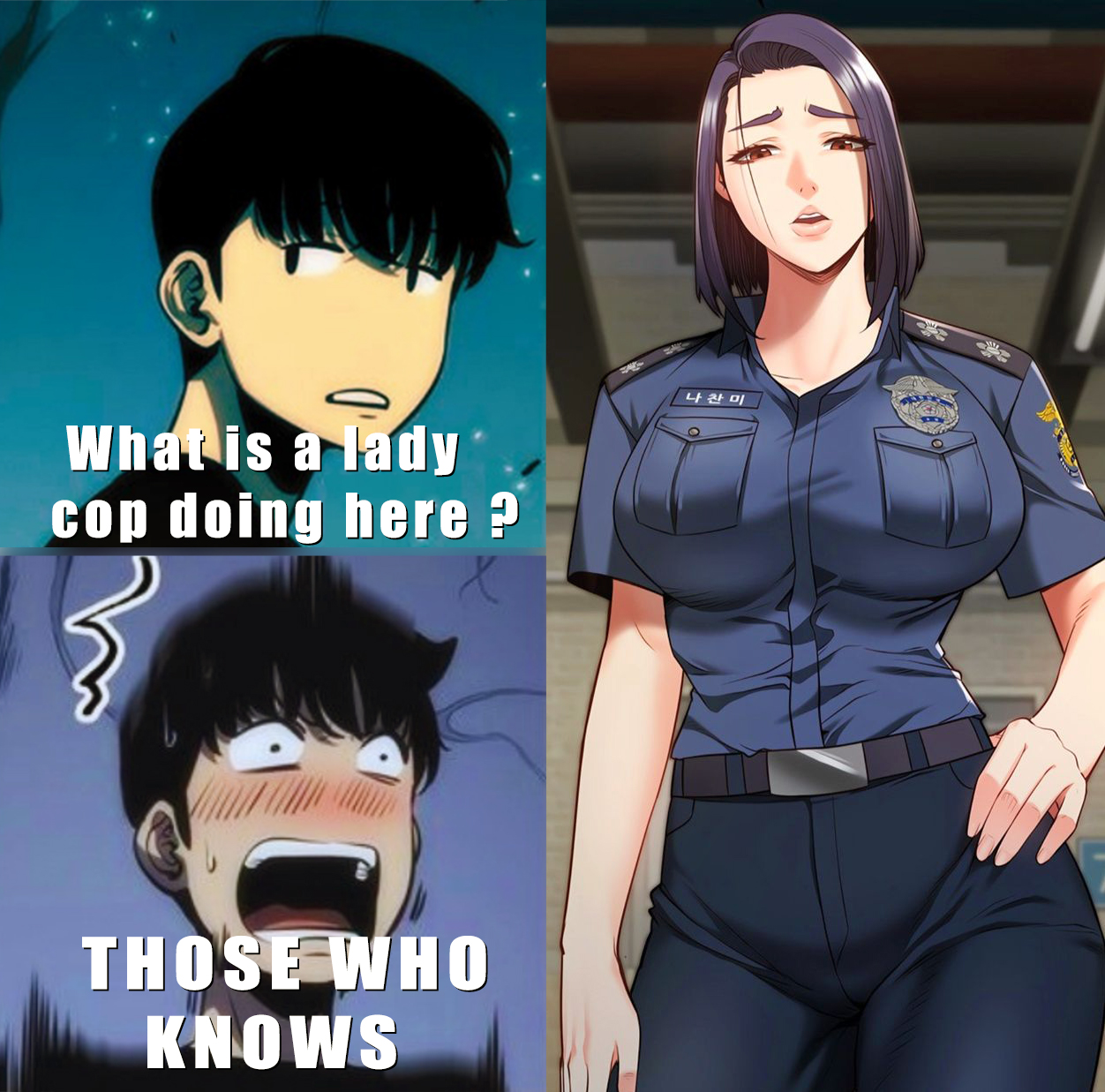Shoujo anime, catering to the teen female audience, is a popular genre filled with heartwarming stories, endearing characters, and plenty of romance. With its memorable tales of love, friendship, and growing up, shoujo anime has garnered an immense fan following.
In contrast to popular mainstream shounen titles like Naruto and Demon Slayer, which are packed with intense action, shoujo anime garbs viewers with emotional, character-driven stories. There is something uniquely charming about the shoujo art style and aesthetic as well.
Note: Animes are not shown based on ranking order.
7. My Happy Marriage
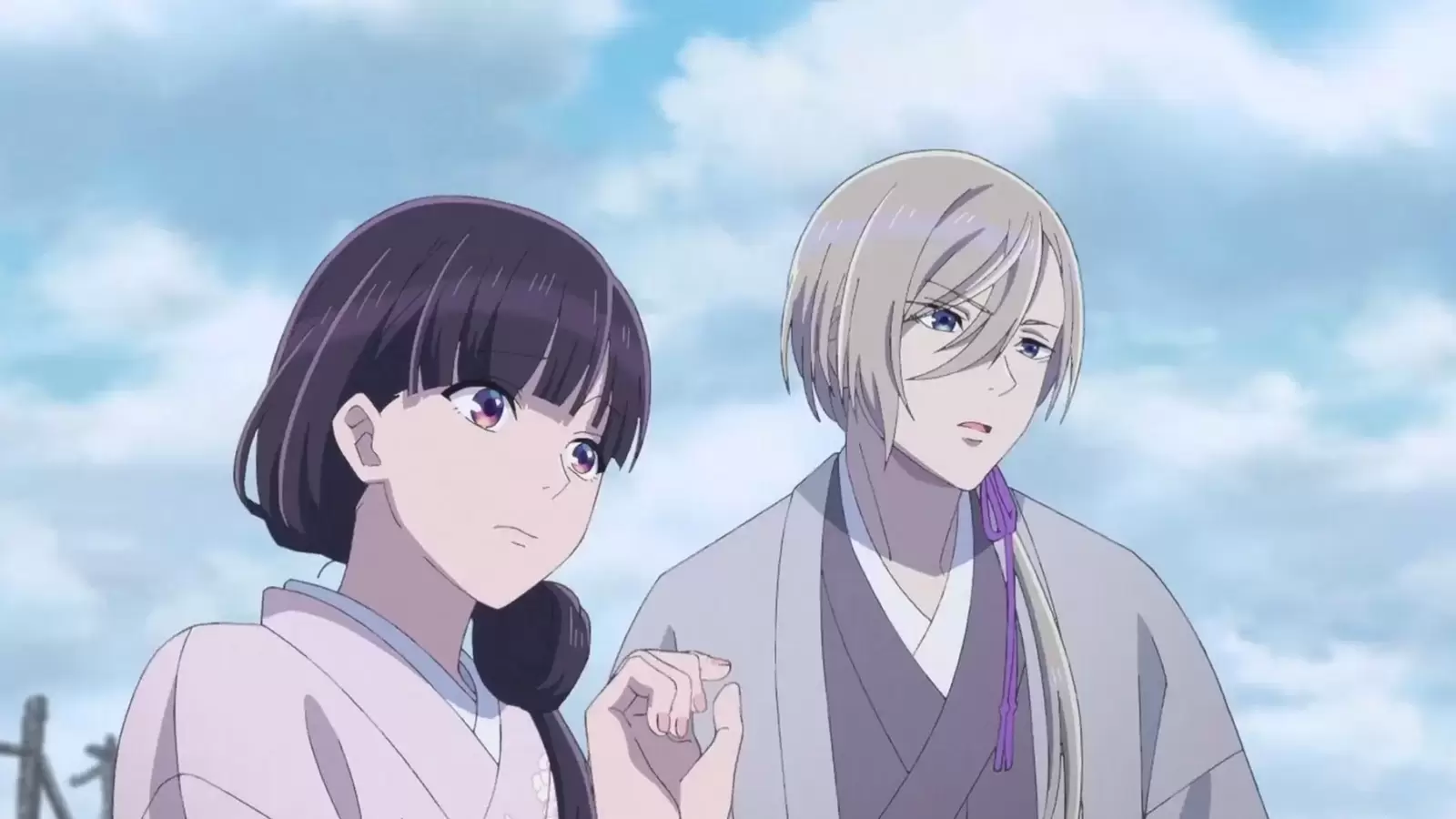
Akumi Agitogi’s My Happy Marriage has enjoyed success across various mediums since its inception as a light novel, and its anime adaptation is poised to be another triumph. The series, gorgeously animated by Kinema Citrus and available exclusively on Netflix, is almost compelling enough to justify a one-month subscription on its own, although those undecided may prefer to wait until the entire season is available for streaming.
Presented as a potential bride for Kiyoka, a military figure known for driving away his suitors, Miyo faces the threat of rejection that could seal her fate.
However, contrary to expectations, their relationship takes an unexpected turn as Miyo and Kiyoka gradually develop a genuine connection, with Kiyoka finding himself drawn to Miyo. Their blossoming romance, tender and heartwarming, unfolds into a timeless love story. Adding depth to their bond is a supernatural element that further intertwines their destinies.
“My Happy Marriage” (Watashi no Shiawase na Kekkon) is a Japanese light novel series written by Akumi Agitogi and illustrated by Tsukiho Tsukioka. The series has grabbed readers with its poignant blend of romance, drama, and emotional depth.
First published in January 2019 by Fujimi L Bunko, the story has also been adapted into a manga and a live-action film, highlighting its popularity and broad appeal. Set in a historical fantasy world, “My Happy Marriage” follows the heartwarming and transformative journey of Miyo Saimori, a young woman who finds love and healing in an arranged marriage.
The story begins with Miyo Saimori, a young woman born into a prestigious family but treated as a servant by her cruel stepmother and stepsister. Her mother died when she was young, and her father remarried, leading to Miyo’s harsh treatment and emotional abuse. Despite her noble lineage, Miyo possesses no supernatural abilities, which are highly valued in her society, further diminishing her worth in her family’s eyes.
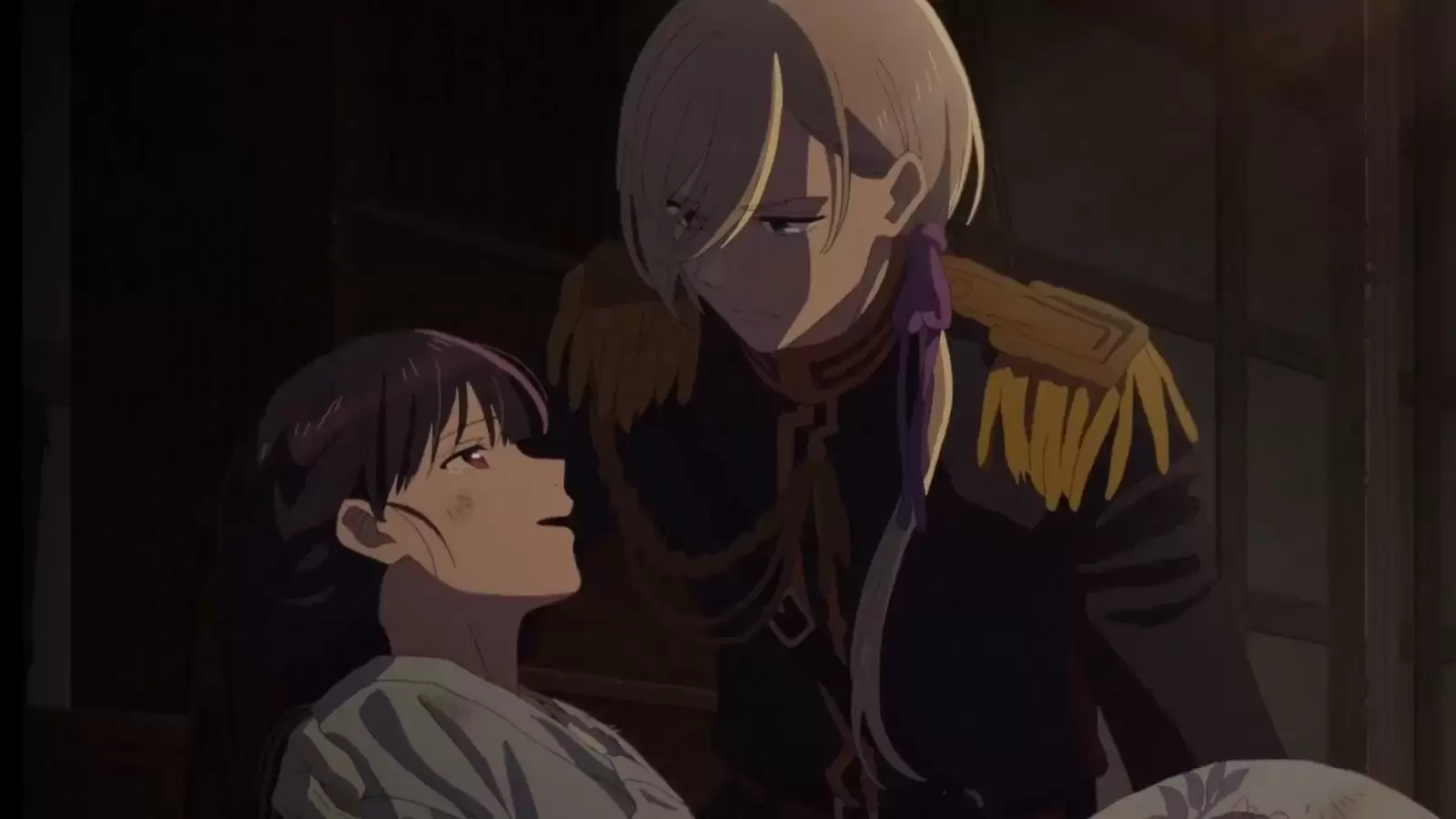
Miyo’s life takes an unexpected turn when she is arranged to marry Kiyoka Kudou, a soldier with a fearsome reputation for being cold and unapproachable. Expecting her new husband to be just as harsh and unforgiving as her family, Miyo is surprised to find that Kiyoka is, in fact, kind and caring.
As they navigate their new life together, Miyo and Kiyoka gradually open up to each other, uncovering their vulnerabilities and healing from their past traumas.
Miyo Saimori: Miyo is the central character of the series, whose journey from a life of abuse and neglect to one of love and acceptance forms the heart of the story. Initially depicted as meek and submissive due to years of mistreatment, Miyo slowly gains confidence and self-worth through her relationship with Kiyoka. Her growth is beautifully portrayed, showing how love and kindness can heal deep emotional wounds.
Kiyoka Kudou: Kiyoka is a complex character who defies the initial impression of being a cold and ruthless soldier. Beneath his stoic exterior lies a compassionate and protective individual who is deeply affected by Miyo’s plight. His gradual opening up to Miyo and his determination to protect and cherish her demonstrate his true character, making him a beloved figure in the story.
Supporting Characters: The series also features a rich cast of supporting characters, each contributing to the narrative’s depth and complexity. Notable characters include:
Yurie: Kiyoka’s loyal housekeeper, who quickly becomes a motherly figure to Miyo, providing her with the care and affection she has long been deprived of.
Koji Tatsuishi: Miyo’s childhood friend who harbors feelings for her and struggles with his own sense of helplessness and guilt over her treatment by her family.
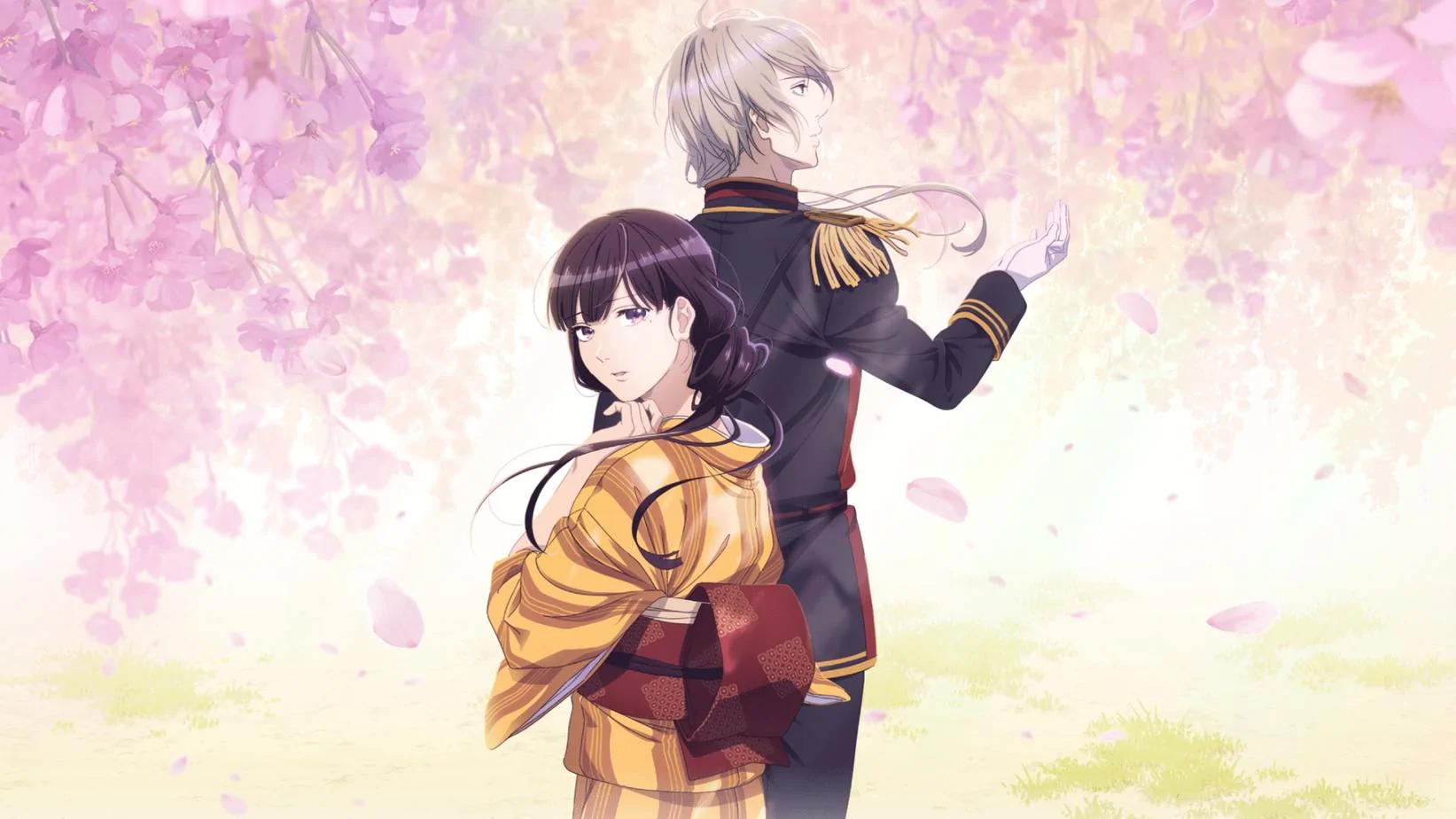
Aya Saimori: Miyo’s cruel stepsister, whose jealousy and spitefulness add tension to the story and highlight the stark contrast between Miyo’s past and present life.
At its core, “My Happy Marriage” explores themes of love, healing, and empowerment. Through Miyo’s journey, the series goes into the transformative power of kindness and compassion, illustrating how they can mend even the most broken of spirits.
The romance between Miyo and Kiyoka is central to the story, showcasing a relationship built on mutual respect, understanding, and genuine care. Their love story unfolds gradually, allowing readers to savor each moment of their growing affection and connection. This slow-burn romance is beautifully depicted, emphasizing the importance of emotional intimacy and trust.
The series portrays the profound impact of emotional healing through love and acceptance. Miyo’s journey from a life of abuse to one of happiness and security highlights the resilience of the human spirit and the potential for recovery with the right support. Kiyoka’s role in her healing process is pivotal, as his unwavering support helps Miyo reclaim her self-worth and find happiness.
“My Happy Marriage” also addresses the theme of empowerment, particularly for women. Miyo’s transformation from a subservient, oppressed girl to a confident and valued individual is inspiring. Her journey encourages readers to believe in their own strength and potential, regardless of their past experiences.
Tsukiho Tsukioka’s illustrations complement Agitogi’s narrative beautifully, capturing the emotional nuances of the characters and the historical fantasy setting. The artwork enhances the storytelling, bringing the characters and their world to life with elegance and detail.
The narrative style of “My Happy Marriage” is evocative and immersive, with a focus on character development and emotional depth. Agitogi’s writing is poignant and expressive, effectively conveying the characters’ inner struggles and growth. The pacing is deliberate, allowing readers to fully engage with the characters’ journeys and the evolving dynamics of their relationships.

“My Happy Marriage” has received widespread acclaim for its compelling storytelling, well-developed characters, and emotional resonance. The series has resonated with readers and critics alike, praised for its sensitive portrayal of themes such as abuse, healing, and love. Its popularity has led to adaptations into other media, including manga and a live-action film, further cementing its status as a beloved work.
The series’ impact extends beyond its entertainment value, offering meaningful insights into the power of love and resilience. It encourages readers to reflect on the importance of compassion, kindness, and the strength to overcome adversity. “My Happy Marriage” has touched the hearts of many, making it a standout in the genre of romance and drama.
“My Happy Marriage” is a deeply moving and beautifully crafted tale of love, healing, and personal growth. Through the compelling journeys of Miyo and Kiyoka, the series explores the transformative power of kindness and the resilience of the human spirit.
With its rich character development, evocative narrative, and exquisite artwork, “My Happy Marriage” offers a heartfelt and inspiring reading experience that resonates long after the final page is turned. Whether you’re a fan of romance and drama, or simply enjoy stories of emotional depth and redemption, “My Happy Marriage” is a must-read that will grab and uplift you.
“My Happy Marriage” is a heartwarming tale that navigates the complexities of love, marriage, and personal growth. The story follows the journey of a young woman named Aki, who enters into an arranged marriage with a man she barely knows. As Aki and her husband, Shota, learn to navigate their relationship, they encounter challenges that test their bond.
Through moments of joy, heartache, and self-discovery, Aki and Shota’s relationship evolves, highlighting the importance of communication, understanding, and compromise in marriage. With its relatable characters and realistic portrayal of married life, “My Happy Marriage” offers a touching and uplifting narrative that resonates with readers.
6. Kimi ni Todoke: From Me to You

Kimi ni Todoke: From Me to You tells the story of a romance blossoming from an unlikely friendship between Sawako, a girl ostracized due to her resemblance to The Ring’s Sadako, and her popular schoolmate. Despite her kind nature, Sawako’s shyness makes it difficult for her to break free from the unfair judgment of her peers and form meaningful connections. However, her world begins to shift when she catches the eye of the charming Shouta.
The anime boasts compelling characters and strikes a delicate balance between drama and comedy. Though the central romance unfolds at a leisurely pace, Sawako and Shouta’s interactions are undeniably heartwarming and endearing.
“Kimi ni Todoke: From Me to You,” often simply referred to as “Kimi ni Todoke,” is a Japanese manga series written and illustrated by Karuho Shiina. Serialized in “Bessatsu Margaret” from 2005 to 2017, the series has garnered widespread acclaim for its heartfelt storytelling, relatable characters, and beautiful artwork.
The story revolves around the shy and misunderstood high school girl Sawako Kuronuma, who goes on a journey of self-discovery, friendship, and love. “Kimi ni Todoke” has also been adapted into an anime series, a live-action film, and a live-action TV drama, further cementing its popularity and cultural impact.
The series centers on Sawako Kuronuma, a kind and timid high school girl who is often misunderstood due to her resemblance to Sadako, the ghostly character from the horror film “The Ring.” Because of her eerie appearance and shy demeanor, Sawako is nicknamed “Sadako” by her classmates and is widely feared and avoided, leading to her isolation and loneliness.
Sawako’s life takes a turn for the better when she befriends the popular and outgoing Shota Kazehaya, who sees beyond her appearance and recognizes her true kind-hearted nature. With Kazehaya’s encouragement and support, Sawako begins to open up and make friends, gradually overcoming her fears and insecurities.
Along the way, Sawako forms deep and meaningful relationships with her classmates, including the bubbly Ayane Yano, the tomboyish Chizuru Yoshida, and the misunderstood Ryu Sanada. As Sawako’s confidence grows, so does her affection for Kazehaya, leading to a sweet and heartwarming romance that forms the core of the series.
Sawako Kuronuma: Sawako is the protagonist of the series, whose journey from a shy and misunderstood girl to a confident and beloved friend is both inspiring and relatable. Her kindness, sincerity, and genuine desire to connect with others make her an endearing character. Sawako’s growth is beautifully portrayed, as she learns to embrace her true self and overcome the obstacles that stand in her way.
Shota Kazehaya: Kazehaya is Sawako’s love interest and one of the most popular boys at school. His friendly and outgoing nature contrasts sharply with Sawako’s shyness, but it is precisely this difference that draws them together. Kazehaya’s unwavering support and belief in Sawako’s goodness play a crucial role in her transformation. His character is well-developed, showcasing his own vulnerabilities and growth as he navigates his feelings for Sawako.
Supporting Characters: “Kimi ni Todoke” features a rich cast of supporting characters, each with their own unique personalities and story arcs. Notable characters include:
Ayane Yano: Ayane is one of Sawako’s closest friends, known for her mature and perceptive nature. She provides valuable advice and support to Sawako, helping her navigate the complexities of high school life and relationships.
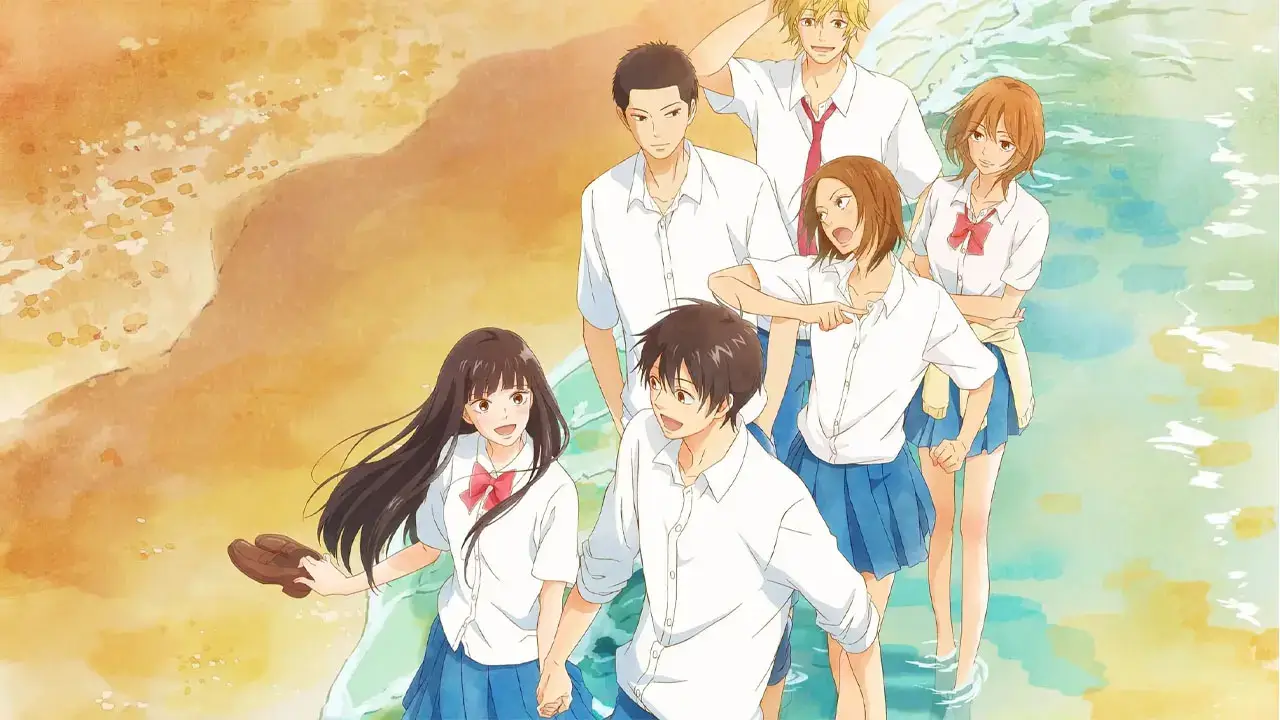
Chizuru Yoshida: Chizuru is another of Sawako’s close friends, characterized by her energetic and tomboyish personality. Her loyalty and straightforwardness make her a dependable friend to Sawako.
Ryu Sanada: Ryu is a quiet and stoic member of the baseball team and Chizuru’s childhood friend. His understated presence and silent support for his friends add depth to his character.
Kento Miura: Kento is a transfer student who becomes interested in Sawako, adding a layer of complexity to the romantic dynamics of the story.
At its core, “Kimi ni Todoke” is a story about friendship, personal growth, and the transformative power of love and kindness. The series explores these themes with sensitivity and depth, making it resonate with readers of all ages.
The friendships in “Kimi ni Todoke” are beautifully portrayed, highlighting the importance of support, understanding, and acceptance. Sawako’s relationships with Ayane, Chizuru, and Ryu provide her with the emotional support she needs to grow and thrive. The series emphasizes that true friendship transcends appearances and is built on trust, loyalty, and mutual respect.
Sawako’s journey of self-discovery and personal growth is central to the story. Through her interactions with Kazehaya and her friends, Sawako learns to overcome her fears, embrace her true self, and find her place in the world. Her transformation from a lonely and misunderstood girl to a confident and beloved friend is both inspiring and heartwarming.
The romance between Sawako and Kazehaya is tender and genuine, capturing the innocence and sweetness of first love. Their relationship is built on mutual respect, understanding, and support, making it a model of healthy and positive romantic relationships. The series explores the challenges and joys of young love with sensitivity and realism.
Karuho Shiina’s artwork in “Kimi ni Todoke” is characterized by its clean lines, expressive character designs, and attention to detail. The art beautifully captures the emotional nuances of the characters, enhancing the storytelling and creating a visually engaging experience. Shiina’s use of facial expressions and body language effectively conveys the characters’ feelings and thoughts, adding depth and authenticity to their interactions.
The narrative style of “Kimi ni Todoke” is gentle and introspective, with a focus on character development and emotional growth. The pacing is deliberate, allowing readers to fully immerse themselves in the characters’ journeys and experiences. Shiina’s storytelling is both poignant and uplifting, balancing moments of humor and lightheartedness with deeper emotional themes.
“Kimi ni Todoke” has received widespread acclaim for its heartfelt storytelling, well-developed characters, and beautiful artwork. The series has been praised for its positive portrayal of friendship, love, and personal growth, making it a beloved classic in the shoujo manga genre. The manga has won numerous awards, including the Kodansha Manga Award and the Shogakukan Manga Award, further highlighting its critical and commercial success.
The series’ popularity has led to adaptations into other media, including a 38-episode anime series, a live-action film, and a live-action TV drama. These adaptations have brought the story to a broader audience, further cementing its cultural impact and enduring appeal.
“Kimi ni Todoke: From Me to You” is a heartwarming and beautifully crafted manga that celebrates the transformative power of friendship, love, and kindness. Through its relatable characters, sensitive storytelling, and expressive artwork, the series offers readers a poignant and uplifting journey of self-discovery and emotional growth.
Whether you’re a fan of romance, drama, or coming-of-age stories, “Kimi ni Todoke” is a must-read that will resonate with your heart and leave a lasting impression. Its timeless themes and endearing characters make it a beloved classic that continues to garb readers around the world.
5. Skip Beat
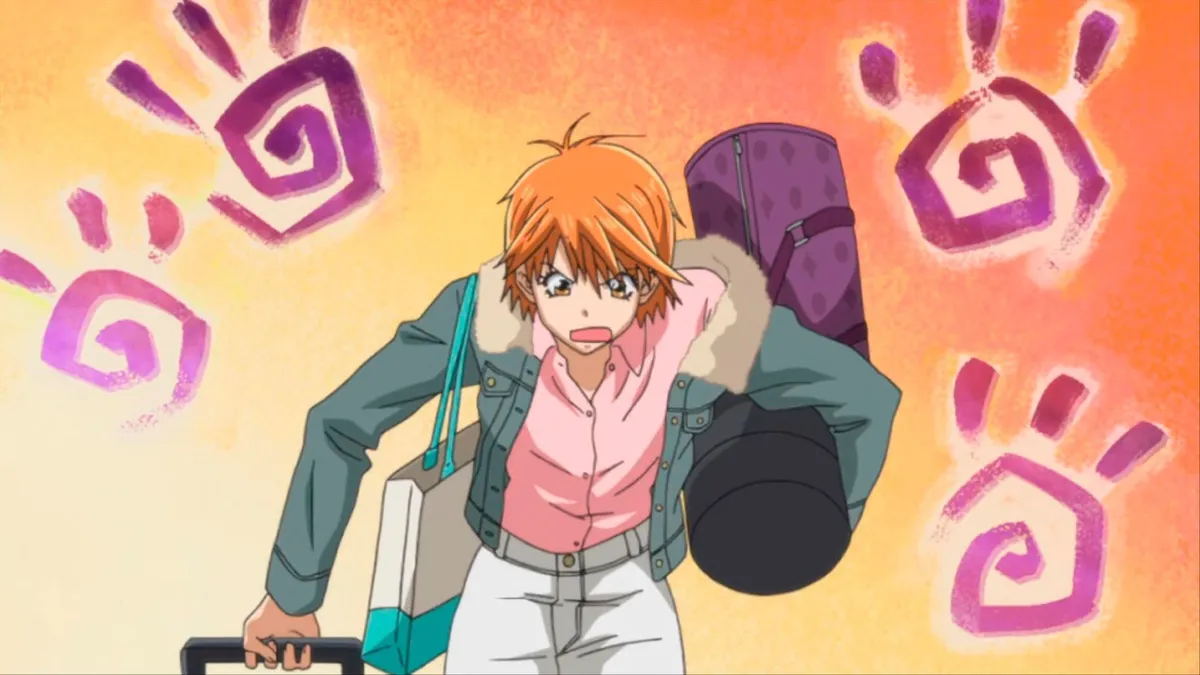
In Skip Beat!, Kyouko Mogami’s world shatters when her boyfriend, Shou, reveals his selfish intentions of using her for his own gain. Rather than succumbing to despair, Kyouko channels her pain into a quest for vengeance, determined to conquer the entertainment industry. Along the way, she encounters the dashing Ren, adding a new dimension to her journey.
Kyouko is undoubtedly one of the standout protagonists in shoujo anime, brimming with energy, charm, and a penchant for hilarity. Her dynamic presence commands attention in every scene, making her a force to be reckoned with. Supported by the contrasting personalities of Shou and Ren, Skip Beat! delivers a trio of compelling leads that fascinate audiences throughout the series.
“Skip Beat!” is a Japanese shōjo manga series written and illustrated by Yoshiki Nakamura. Serialized in “Hana to Yume” magazine since 2002, the series has grabbed readers with its compelling blend of drama, comedy, and romance.
The story follows Kyoko Mogami, a determined young woman who enters the entertainment industry seeking revenge but discovers her true passion and talent along the way. With its intricate plot, rich character development, and emotional depth, “Skip Beat!” stands out as a remarkable and enduring series in the shōjo genre.
“Skip Beat!” begins with Kyoko Mogami, a sweet and hardworking 16-year-old girl who moves to Tokyo with her childhood friend and crush, Shoutaro “Sho” Fuwa, to support his dream of becoming a famous singer. Kyoko works tirelessly at multiple jobs to provide for Sho, who eventually achieves stardom. However, Kyoko’s world shatters when she discovers that Sho views her merely as a convenient servant and has no romantic feelings for her.
Devastated and consumed by anger, Kyoko vows to take revenge by entering the entertainment industry herself and surpassing Sho’s fame. She auditions for the prestigious LME talent agency but is initially rejected for lacking a genuine love for acting.
Nevertheless, Kyoko’s fiery determination and potential catch the eye of Lory Takarada, the eccentric president of LME, who offers her a place in the agency’s “Love Me Section,” a department designed to help aspiring talents develop their skills and self-worth.
As Kyoko navigates the challenges and complexities of the entertainment world, she encounters various characters who shape her journey, including Ren Tsuruga, a top actor with a mysterious past, and Kanae “Moko” Kotonami, a rival-turned-friend. Through her experiences, Kyoko discovers her passion for acting, confronts her insecurities, and goes on a path of self-discovery and growth.
Kyoko Mogami: Kyoko is the heart and soul of “Skip Beat!” Her transformation from a naive and self-sacrificing girl to a determined and passionate actress is central to the story. Driven by a desire for revenge, Kyoko initially views acting as a means to an end.
However, as she immerses herself in the craft, she uncovers her latent talent and begins to pursue acting for its own sake. Kyoko’s journey is marked by moments of vulnerability, resilience, and personal growth, making her a deeply relatable and inspiring character.
Ren Tsuruga: Ren is one of the most prominent figures in Kyoko’s life and her primary love interest. A highly respected and successful actor, Ren initially appears cold and distant. However, as the story progresses, his layers are peeled back to reveal a complex individual grappling with his own past and emotions. Ren becomes a mentor and confidant to Kyoko, helping her navigate the entertainment industry while struggling with his growing feelings for her.
Shoutaro “Sho” Fuwa: Sho serves as both Kyoko’s antagonist and catalyst for her transformation. A charismatic but self-centered singer, Sho’s betrayal and disdain for Kyoko ignite her quest for revenge. Throughout the series, Sho’s interactions with Kyoko range from antagonistic to begrudgingly respectful, highlighting his own conflicted feelings towards her.
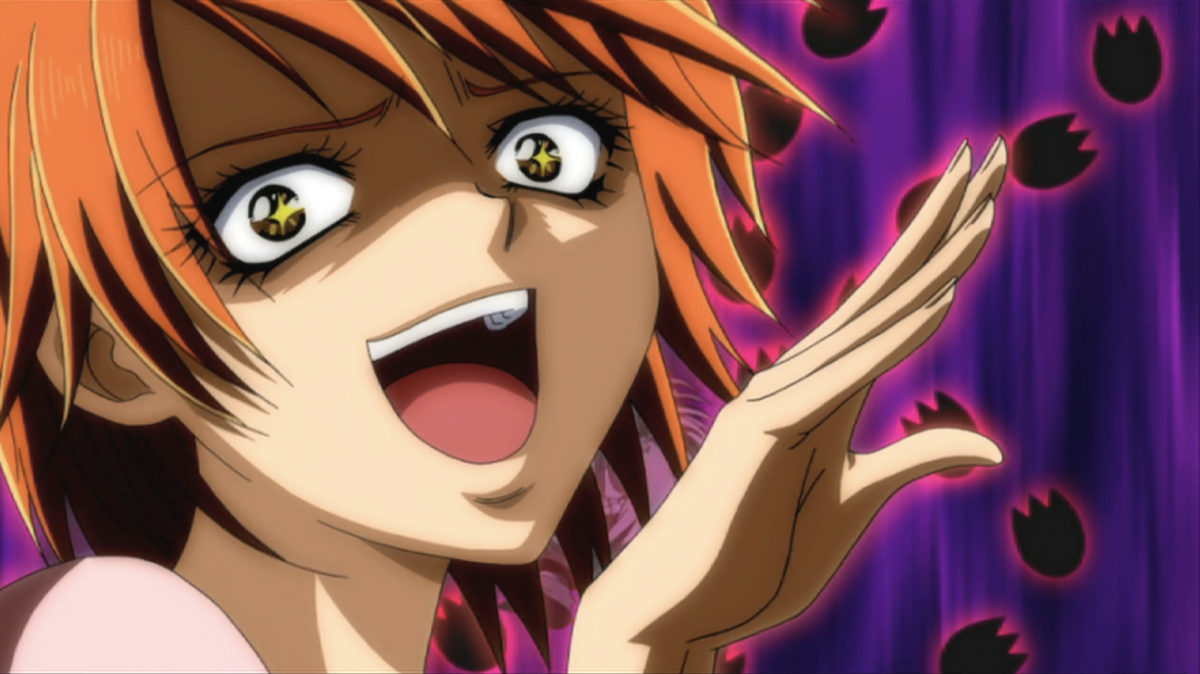
Supporting Characters: “Skip Beat!” boasts a rich ensemble of supporting characters who add depth and nuance to the narrative. Notable characters include:
Kanae “Moko” Kotonami: Kyoko’s rival-turned-friend, Moko is a talented actress with her own aspirations and insecurities. Her evolving friendship with Kyoko provides emotional support and comic relief.
Lory Takarada: The flamboyant president of LME, Lory sees potential in Kyoko and takes her under his wing. His eccentric personality and unconventional methods often lead to humorous and heartwarming moments.
Yukihito Yashiro: Ren’s manager, Yashiro serves as a supportive and perceptive figure, often acting as a mediator between Ren and Kyoko.
At its core, “Skip Beat!” explores themes of ambition, self-discovery, and empowerment. The series goes into the personal and professional growth of its characters, particularly Kyoko, as they navigate the highs and lows of the entertainment industry.
Kyoko’s initial drive for revenge evolves into a genuine passion for acting. Her journey illustrates the transformative power of ambition when it is channeled towards personal growth and self-fulfillment. The series highlights the challenges and sacrifices involved in pursuing one’s dreams, emphasizing the importance of perseverance and resilience.
Kyoko’s path to self-discovery is central to the narrative. Through her experiences in the “Love Me Section” and her interactions with other characters, she learns to confront her insecurities, embrace her talents, and redefine her sense of self-worth. The series portrays the process of self-discovery as a continuous and multifaceted journey.
“Skip Beat!” celebrates the empowerment of its characters, particularly Kyoko, as they overcome obstacles and assert their identities. Kyoko’s transformation from a subservient girl to a confident and independent actress serves as an inspiring testament to the power of self-belief and determination.
Yoshiki Nakamura’s artwork in “Skip Beat!” is characterized by its expressive and dynamic style. The detailed character designs, intricate backgrounds, and fluid panel layouts enhance the storytelling and bring the emotional nuances of the narrative to life. Nakamura skillfully captures the intensity of the characters’ emotions, whether through dramatic close-ups or comedic exaggerations.
The narrative style of “Skip Beat!” is engaging and well-paced, blending drama, comedy, and romance with deft precision. Nakamura’s writing balances the characters’ personal and professional lives, creating a rich and immersive reading experience. The series’ episodic structure allows for the exploration of various story arcs and character developments, while overarching plotlines provide continuity and depth.
“Skip Beat!” has garnered widespread acclaim for its compelling storytelling, well-developed characters, and emotional depth. The series has resonated with readers and critics alike, praised for its positive portrayal of ambition, resilience, and self-empowerment. Its popularity has led to adaptations into other media, including a 25-episode anime series, a Taiwanese live-action drama, and stage plays.
The series’ impact extends beyond its entertainment value, offering meaningful insights into the complexities of the entertainment industry and the personal growth of its characters. “Skip Beat!” has inspired discussions about the challenges and rewards of pursuing one’s dreams, making it a beloved and enduring work in the shōjo genre.
“Skip Beat!” is a riveting and heartfelt manga that celebrates the journey of ambition, self-discovery, and empowerment. Through its relatable characters, intricate plot, and expressive artwork, the series offers readers a compelling and immersive experience.
Whether you’re a fan of drama, comedy, or romance, “Skip Beat!” is sure to grab your heart and leave a lasting impression. Its timeless themes and inspiring characters make it a standout work that continues to resonate with readers around the world.
4. Cardcaptor Sakura

Since its debut in 1998, the original Cardcaptor Sakura has remained a beloved classic, a fact further solidified by its 2018 sequel, Clear Card. Sakura’s journey to reclaim the enchanting Clow Cards is a delightful blend of whimsy and adventure, featuring a rivals-to-lovers romance that steers clear of typical shojo clichés.
The series sets itself apart by subverting traditional magical girl tropes, eschewing even the customary transformation sequences, and offering a refreshing take on the genre.
Despite the passage of time, Cardcaptor Sakura continues to charm audiences with its impeccable blend of comedy, drama, and action, though some viewers may need to overlook the youthful nature of the romantic entanglements. Nevertheless, the series stands as a testament to its enduring appeal and quality storytelling.
“Cardcaptor Sakura,” also known simply as “CCS,” is a Japanese manga series created by the acclaimed all-female artist group CLAMP. Serialized from 1996 to 2000 in Nakayoshi magazine, the series has garnered widespread acclaim and remains a beloved classic in the magical girl genre.
The story follows Sakura Kinomoto, a young girl who discovers her latent magical abilities and goes on a quest to capture mystical Clow Cards, which have been released into the world. With its enchanting blend of adventure, friendship, and self-discovery, “Cardcaptor Sakura” has captured the hearts of audiences worldwide.
The series begins with Sakura Kinomoto, a cheerful and energetic 10-year-old girl living in the fictional town of Tomoeda. One day, while exploring her father’s library, Sakura accidentally releases a set of magical cards known as Clow Cards, created by the powerful sorcerer Clow Reed. Each card possesses a unique power and personality, and their uncontrolled presence poses a threat to the world.
Guided by Keroberos (Kero), the guardian beast of the Clow Cards, Sakura is tasked with recapturing all the escaped cards to prevent disaster.
Armed with the Sealing Wand and accompanied by her best friend Tomoyo Daidouji, who documents her adventures and designs her costumes, Sakura takes on the role of the Cardcaptor. Throughout her journey, Sakura encounters various challenges and adversaries, including the mysterious Syaoran Li, a descendant of Clow Reed who initially sees Sakura as a rival but gradually becomes her ally and friend.
As Sakura captures more cards and hones her magical abilities, she learns valuable lessons about courage, responsibility, and the power of love and friendship. The series explores her growth as both a magician and a person, culminating in a climactic battle that tests her resolve and strength.
Sakura Kinomoto: Sakura is the heart and soul of the series. Her character is defined by her optimism, kindness, and unwavering determination. Despite the dangers and challenges she faces, Sakura approaches each task with a positive attitude and a willingness to help others. Her growth from an ordinary girl to a confident and capable Cardcaptor is central to the story, making her an inspiring and relatable protagonist.
Keroberos (Kero): Kero is the guardian of the Clow Cards, appearing in the form of a small, plush-like creature. He serves as Sakura’s guide and mentor, providing her with knowledge about the cards and magical world. Kero’s playful and humorous personality adds a lighthearted element to the series, though he can be serious and protective when needed.
Tomoyo Daidouji: Tomoyo is Sakura’s best friend and staunchest supporter. She designs elaborate costumes for Sakura’s Cardcaptor missions and films her adventures. Tomoyo’s unwavering loyalty and admiration for Sakura highlight the importance of friendship and support. Her calm and mature demeanor often provides balance to Sakura’s exuberance.
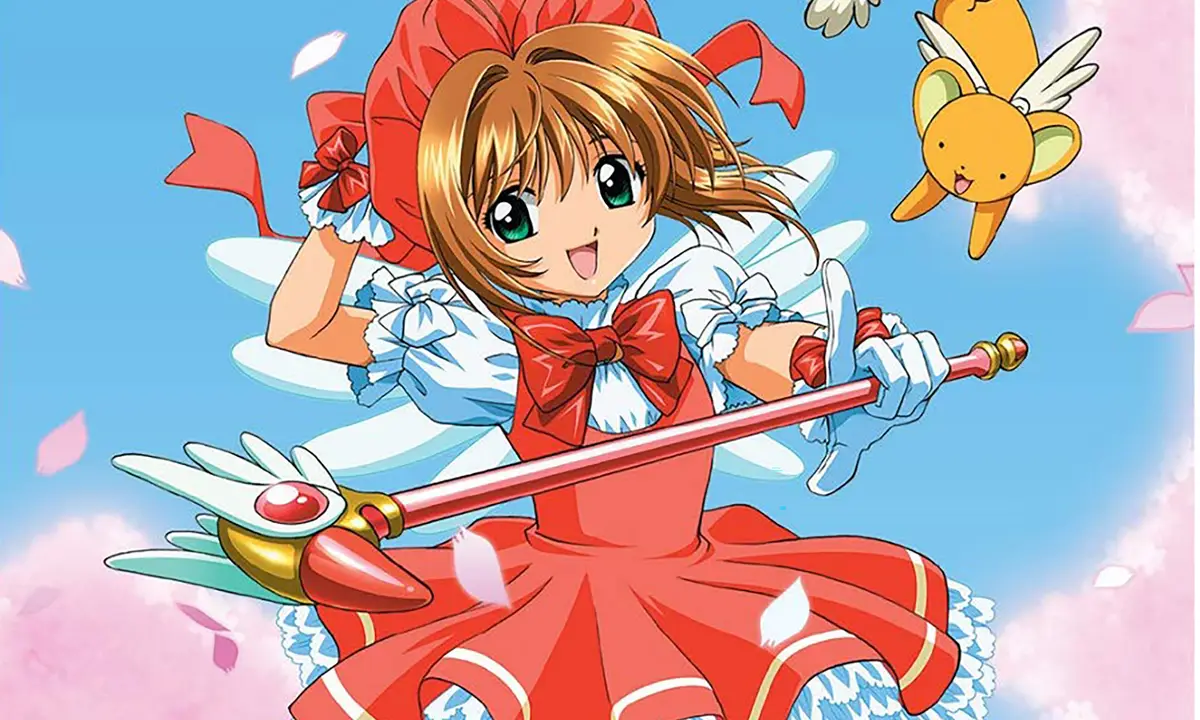
Syaoran Li: Syaoran starts as Sakura’s rival, determined to capture the Clow Cards himself due to his lineage as a descendant of Clow Reed. However, as the series progresses, he becomes one of Sakura’s closest allies and friends. Syaoran’s character development is significant, as he transitions from a serious and solitary figure to a caring and supportive companion, eventually developing feelings for Sakura.
Supporting Characters: The series features a rich cast of supporting characters, each contributing to the narrative’s depth and complexity. Notable characters include:
Yukito Tsukishiro / Yue: Yukito is Sakura’s crush and the alter ego of Yue, the second guardian of the Clow Cards. Yue’s stoic and enigmatic nature contrasts with Yukito’s gentle and kind personality, adding layers to their character.
Toya Kinomoto: Sakura’s older brother, Toya, is protective of her and possesses a keen sense of intuition. His interactions with Yukito and his hidden awareness of magical events add intrigue to the story.
Clow Reed / Eriol Hiiragizawa: Clow Reed is the original creator of the Clow Cards, and his reincarnation, Eriol, becomes a central figure in the latter part of the series. Eriol’s intentions and actions drive much of the plot’s tension and resolution.
“Cardcaptor Sakura” explores several enduring themes that resonate with audiences of all ages. The series goes into the importance of friendship, the journey of personal growth, and the enchanting world of magic.
The bond between Sakura and her friends is a cornerstone of the series. Tomoyo’s unwavering support, Syaoran’s evolving relationship with Sakura, and the camaraderie among the characters emphasize the value of friendship and loyalty. The series portrays how friends can provide strength, encouragement, and comfort during challenging times.
Sakura’s journey from an ordinary girl to a powerful Cardcaptor is a metaphor for personal growth and self-discovery. Through her experiences, she learns to trust herself, embrace her strengths, and face her fears. The series highlights the importance of perseverance, responsibility, and the courage to confront challenges.
The magical elements of “Cardcaptor Sakura” are beautifully integrated into the narrative, creating a sense of wonder and enchantment. The Clow Cards, each with unique abilities and personalities, add depth to the story’s magical world. Sakura’s interactions with the cards and her evolving magical abilities symbolize her growing understanding of herself and her place in the world.
CLAMP’s artwork in “Cardcaptor Sakura” is renowned for its elegance, detail, and expressiveness. The character designs are distinctive, with elaborate costumes and emotive expressions that convey the characters’ personalities and emotions. The settings are richly illustrated, enhancing the magical atmosphere of the series.
The narrative style of “Cardcaptor Sakura” is engaging and well-paced, blending episodic adventures with overarching plotlines. Each card capture serves as a self-contained story, contributing to Sakura’s development and the series’ broader themes. CLAMP’s storytelling balances moments of action, humor, and heartfelt emotion, creating a grabbing and immersive experience for readers.
“Cardcaptor Sakura” has received widespread acclaim for its charming storytelling, well-developed characters, and stunning artwork. The series has been praised for its positive portrayal of a strong, independent female protagonist and its emphasis on themes of friendship and self-discovery. Its popularity has led to numerous adaptations, including a successful anime series, movies, video games, and merchandise.
The series has also had a significant cultural impact, influencing subsequent works in the magical girl genre and inspiring a dedicated fanbase. “Cardcaptor Sakura” has been recognized with various awards and continues to be celebrated for its timeless appeal and enduring legacy.
“Cardcaptor Sakura” is a delightful and enchanting manga that celebrates the journey of friendship, self-discovery, and magic. Through its endearing characters, grabbing plot, and exquisite artwork, the series offers readers a heartwarming and inspiring adventure.
Whether you’re a fan of magical girl stories or simply enjoy tales of personal growth and courage, “Cardcaptor Sakura” is a must-read that will capture your heart and imagination. Its timeless themes and beloved characters make it a classic that continues to resonate with audiences around the world.
3. Kamisama Kiss
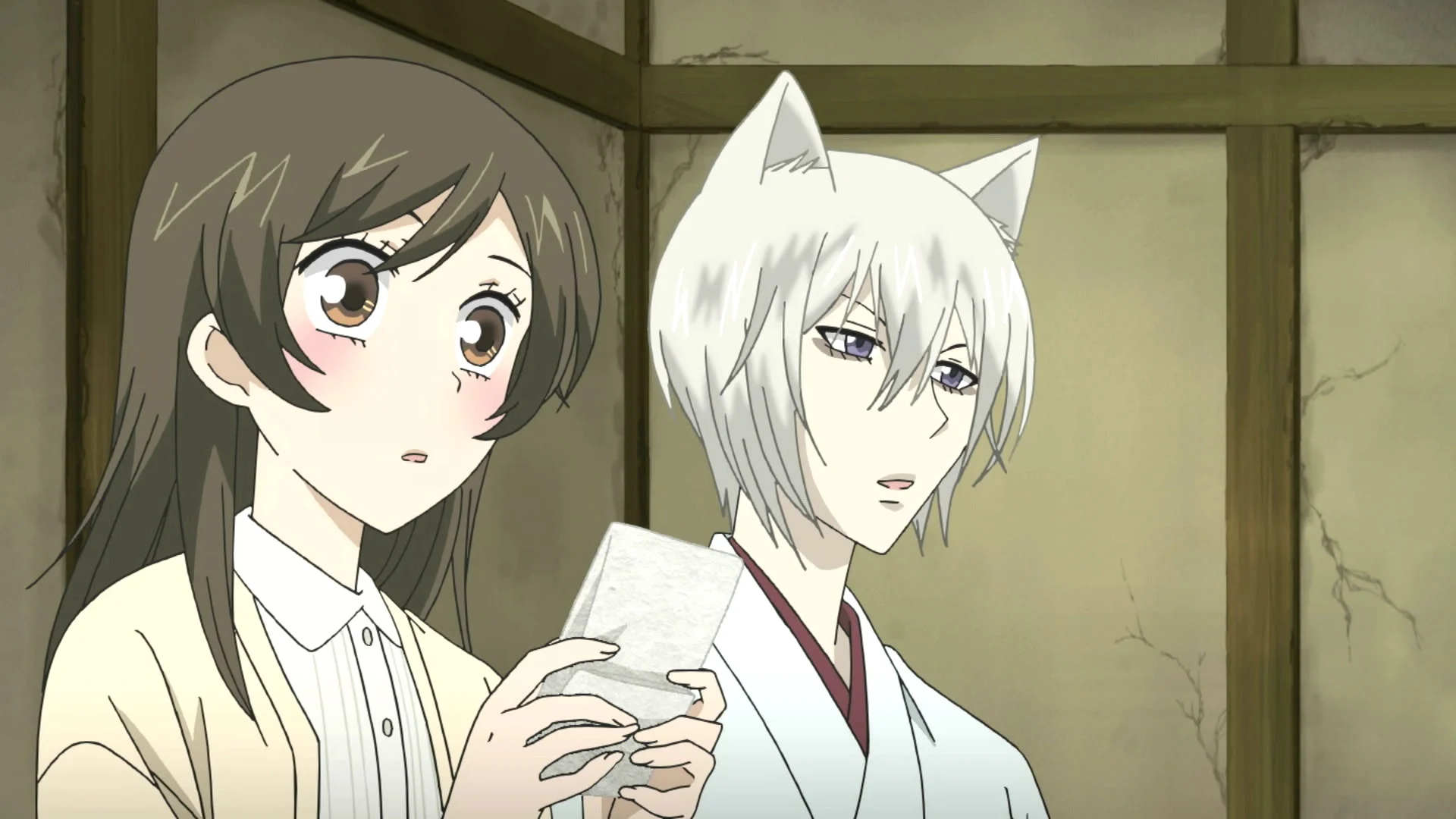
Kamisama Kiss is a delightful romantic comedy infused with a hint of the supernatural that spins a truly unique tale. It’s a story where unexpected twists lead to hilarious situations, like finding oneself suddenly homeless, rescuing a man from a dog, and even ascending to godhood! Nanami’s escapades alongside the fox spirit Tomoe bring to mind the adventurous spirit of Inu Yasha, yet with a refined touch that sets it apart.
The series has garnered such fervent fan support that it’s spawned multiple OVAs, a testament to its enduring charm and appeal.
“Kamisama Kiss,” also known as “Kamisama Hajimemashita,” is a Japanese manga series written and illustrated by Julietta Suzuki. Serialized in Hakusensha’s “Hana to Yume” magazine from 2008 to 2016, the series spans 25 volumes and has been adapted into two anime seasons, several OVAs, and a stage play.
The story follows Nanami Momozono, a high school girl who becomes a deity of a local shrine, and her encounters with various gods, yokai (supernatural creatures), and spirits. “Kamisama Kiss” blends romance, comedy, and fantasy to create a heartwarming and engaging narrative that has entertained fans worldwide.
The story begins with Nanami Momozono, a high school girl who is left homeless after her father skips town to escape his gambling debts. As she wanders the streets, she encounters a mysterious man named Mikage, who offers her his home after hearing about her plight. Desperate and with nowhere else to go, Nanami accepts his offer, only to discover that his “home” is a rundown shrine.
Mikage, it turns out, is a local deity who has decided to pass on his role to Nanami. He transfers his mark of the deity to her, making her the new land god of the shrine. Along with this new responsibility, Nanami inherits Mikage’s familiar, Tomoe, a powerful fox yokai who initially resents her presence and refuses to serve her. However, through determination and kindness, Nanami gradually wins Tomoe’s respect and loyalty.
As Nanami adjusts to her new life as a deity, she encounters a variety of supernatural beings and faces numerous challenges. She must learn to navigate the complexities of the divine world while managing her own human emotions. Throughout her journey, Nanami develops feelings for Tomoe, leading to a slow-burning romance that forms the emotional core of the series.
Nanami Momozono: Nanami is a strong, compassionate, and resourceful protagonist. Despite the sudden upheaval in her life, she approaches her new role with determination and kindness. Her growth from a helpless high school girl to a capable and confident land god is central to the story. Nanami’s resilience and empathy make her an endearing character, and her evolving relationship with Tomoe adds depth to her character development.
Tomoe: Tomoe is a complex character with a rich backstory. As a fox yokai who has lived for centuries, he initially views Nanami as an unworthy replacement for Mikage. However, as he witnesses her genuine care for the shrine and its inhabitants, he begins to soften and develop feelings for her. Tomoe’s journey from a cold and aloof familiar to a loyal and loving companion is one of the highlights of the series.
Supporting Characters: “Kamisama Kiss” features a diverse cast of supporting characters, each contributing to the story’s depth and charm. Notable characters include:
Mizuki: A snake familiar who becomes Nanami’s second familiar. His playful and mischievous nature contrasts with Tomoe’s seriousness, adding a dynamic and humorous element to the series.
Kurama: A crow tengu and popular idol who initially tries to exploit Nanami for his own gain but eventually becomes one of her allies. His character adds both comic relief and depth to the narrative.
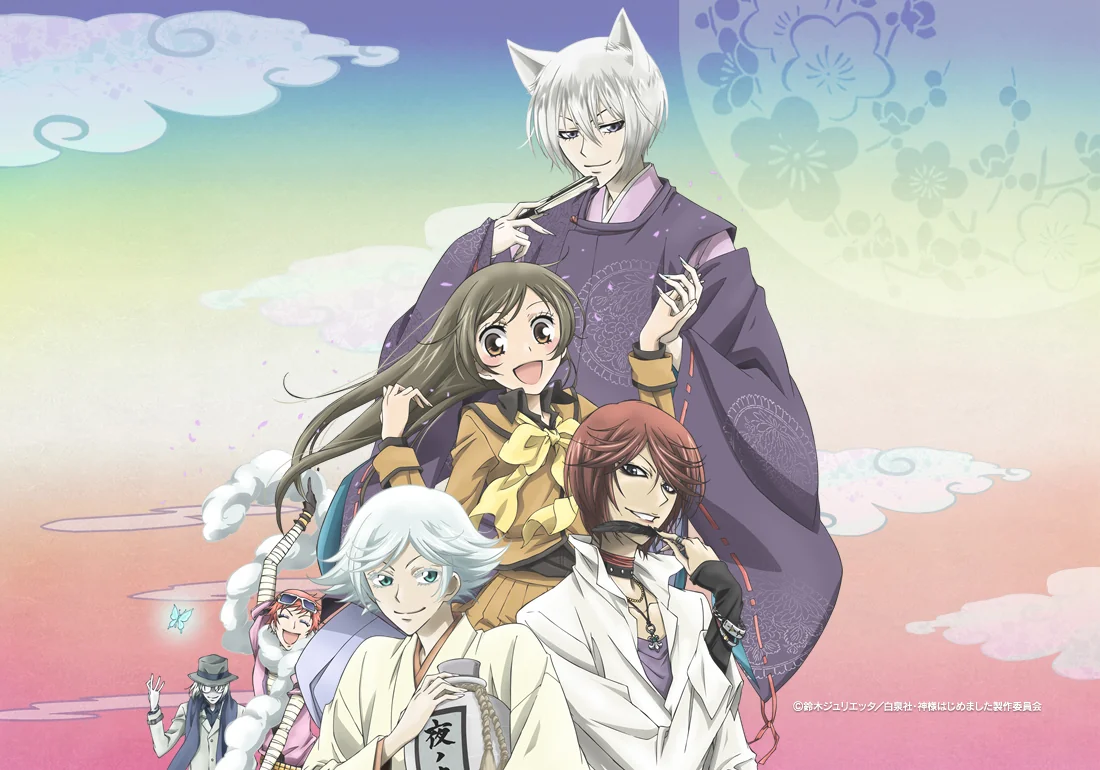
Mikage: The former land god who mysteriously disappears after bestowing his powers on Nanami. His motives and past actions are gradually revealed, adding intrigue to the story.
“Kamisama Kiss” explores several themes that resonate with readers, including personal growth, love, and the acceptance of responsibility.
Nanami’s journey is one of self-discovery and growth. As she learns to navigate the challenges of being a land god, she becomes more confident and capable. Her development is mirrored by Tomoe, who also undergoes significant growth as he learns to trust and care for Nanami.
The romance between Nanami and Tomoe is central to the series. Their relationship develops slowly and organically, marked by moments of tension, humor, and tenderness. The series explores the complexities of their feelings, especially given their different natures and the obstacles they face.
Nanami’s acceptance of her role as a land god reflects the theme of responsibility. She learns to balance her duties with her personal desires, often putting the needs of others before her own. This theme is also evident in Tomoe’s character, as he grapples with his past actions and his responsibilities as Nanami’s familiar.
Julietta Suzuki’s artwork in “Kamisama Kiss” is characterized by its delicate lines, expressive characters, and attention to detail. The character designs are distinct and visually appealing, capturing the personalities and emotions of each character effectively. The settings, from the serene shrine to the vibrant supernatural realms, are beautifully illustrated, enhancing the series’ enchanting atmosphere.
The narrative style of “Kamisama Kiss” balances humor, romance, and drama, creating an engaging and well-paced story. Suzuki skillfully weaves together episodic adventures with overarching plotlines, allowing for character development and world-building. The series’ tone shifts seamlessly between lighthearted moments and more serious themes, maintaining a nice and immersive reading experience.
“Kamisama Kiss” has received widespread acclaim for its charming storytelling, well-developed characters, and beautiful artwork. The series has resonated with fans for its positive portrayal of growth, love, and responsibility. Its popularity has led to several adaptations, including a 25-episode anime series, OVA episodes, a live-action stage play, and various merchandise.
The anime adaptation, in particular, has helped broaden the series’ audience, introducing “Kamisama Kiss” to viewers who may not have read the manga. The anime stays true to the source material, capturing its essence and charm while adding its own unique touches, such as a memorable soundtrack and voice performances.
“Kamisama Kiss” is a delightful and enchanting series that blends romance, comedy, and fantasy to create a heartwarming narrative. Through its endearing characters, engaging plot, and beautiful artwork, the series offers readers a nice journey of growth, love, and self-discovery.
Whether you’re a fan of supernatural tales or heartwarming romances, “Kamisama Kiss” is a must-read that will leave a lasting impression. Its timeless themes and charming storytelling make it a beloved classic that continues to enchant audiences around the world.
2. Revolutionary Girl Utena
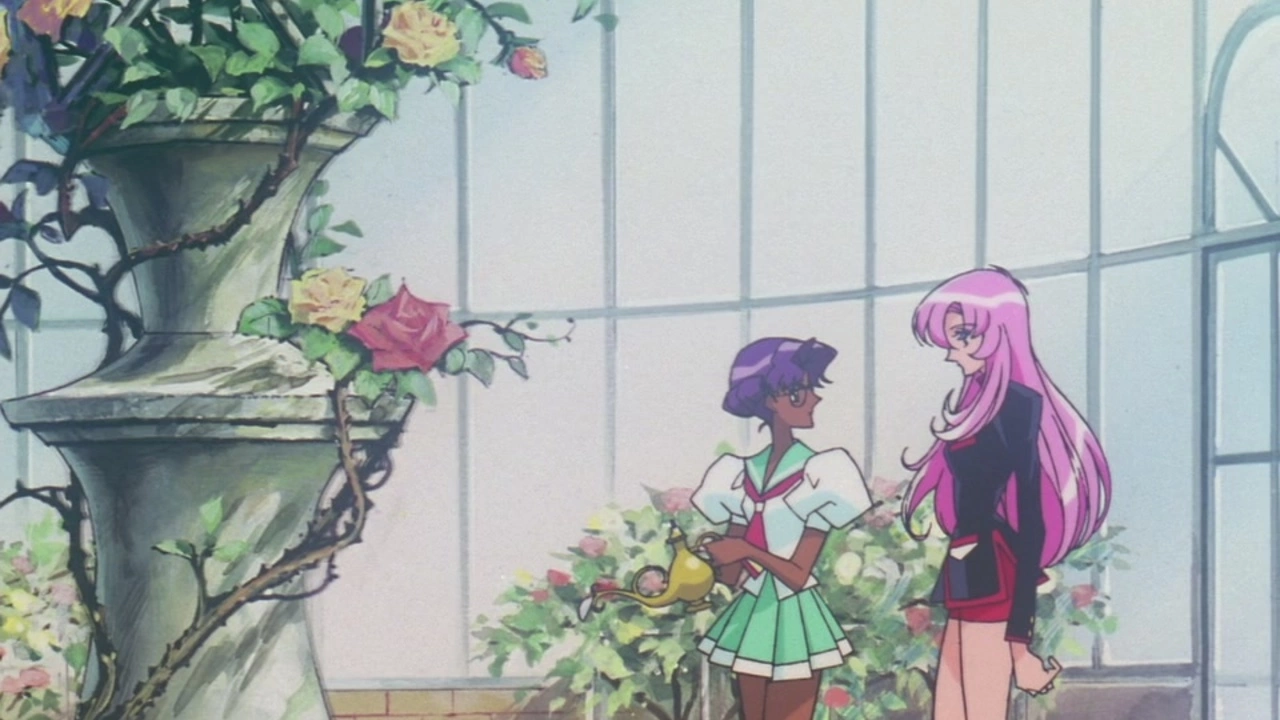
Revolutionary Girl Utena, recipient of the esteemed Best TV Animation Award in 1997, made waves as one of the pioneering anime series to introduce lesbian romance to Western audiences. Its impact was nothing short of significant. The show’s bold use of surrealism and symbolism to narrate a poignant coming-of-age tale continues to fascinate viewers to this day.
Utena’s journey at the prestigious Ootori Academy thrusts her into thrilling sword-fighting duels, unexpectedly leading to an engagement with Anthy and revealing a clandestine mission to revolutionize the world. Witnessing the gradual traveling of the series’ mysteries is undeniably gratifying. For those seeking a different perspective, the Adolescence of Utena movie offers an intriguing alternative retelling of the story.
“Revolutionary Girl Utena” (“Shoujo Kakumei Utena”) is a seminal work in anime and manga, created by the collective Be-Papas and directed by Kunihiko Ikuhara. The manga was written by Chiho Saito and serialized in “Ciao” magazine from 1996 to 1998.
The anime aired in 1997, spanning 39 episodes, and was followed by a feature film, “Adolescence of Utena,” in 1999. Renowned for its intricate narrative, striking visuals, and deep thematic content, “Revolutionary Girl Utena” has left an indelible mark on the medium, continuing to be a subject of analysis and admiration.
“Revolutionary Girl Utena” centers around Utena Tenjou, a teenage girl who, inspired by a prince who once comforted her during her childhood, strives to become a prince herself.
Utena attends Ohtori Academy, where she encounters a series of enigmatic and surreal events. At the academy, Utena becomes embroiled in a series of duels organized by the mysterious Student Council, who are all vying for control of the “Rose Bride,” a student named Anthy Himemiya.
Anthy is bound to the winner of the duels, granting them the power to revolutionize the world. Utena, after defeating one of the council members, inadvertently becomes engaged with Anthy and is thrust into the cycle of duels. As Utena fights to protect Anthy and uncover the secrets behind the duels, she begins to challenge the underlying structures of power and identity at the academy.
Utena Tenjou: Utena is a complex protagonist whose journey is marked by themes of identity, nobility, and rebellion. Her aspiration to be a prince, rather than a conventional princess, challenges traditional gender roles and societal expectations. Utena’s growth is deeply tied to her relationships and the evolving understanding of her own desires and motivations.
Anthy Himemiya: Anthy is a multifaceted character who serves as the Rose Bride, a role that subjects her to manipulation and abuse by the duelists. Initially portrayed as submissive and enigmatic, Anthy’s character gradually reveals layers of complexity and trauma. Her relationship with Utena becomes a catalyst for her own path to self-liberation.
Student Council Members: The members of the Student Council each possess distinct personalities and backstories, adding depth to the narrative. Characters like Touga Kiryuu, Juri Arisugawa, Miki Kaoru, and Nanami Kiryuu each represent different aspects of power, ambition, and personal conflict. Their interactions with Utena and Anthy provide critical insights into the broader themes of the series.
“Revolutionary Girl Utena” goes into profound themes that challenge conventional storytelling and provoke thoughtful analysis.
The series explores the fluidity and complexity of identity, particularly through Utena’s rejection of traditional gender norms. Her desire to be a prince symbolizes a quest for self-definition beyond societal constraints. Similarly, Anthy’s journey reflects the struggle to reclaim her own identity from the roles imposed upon her.
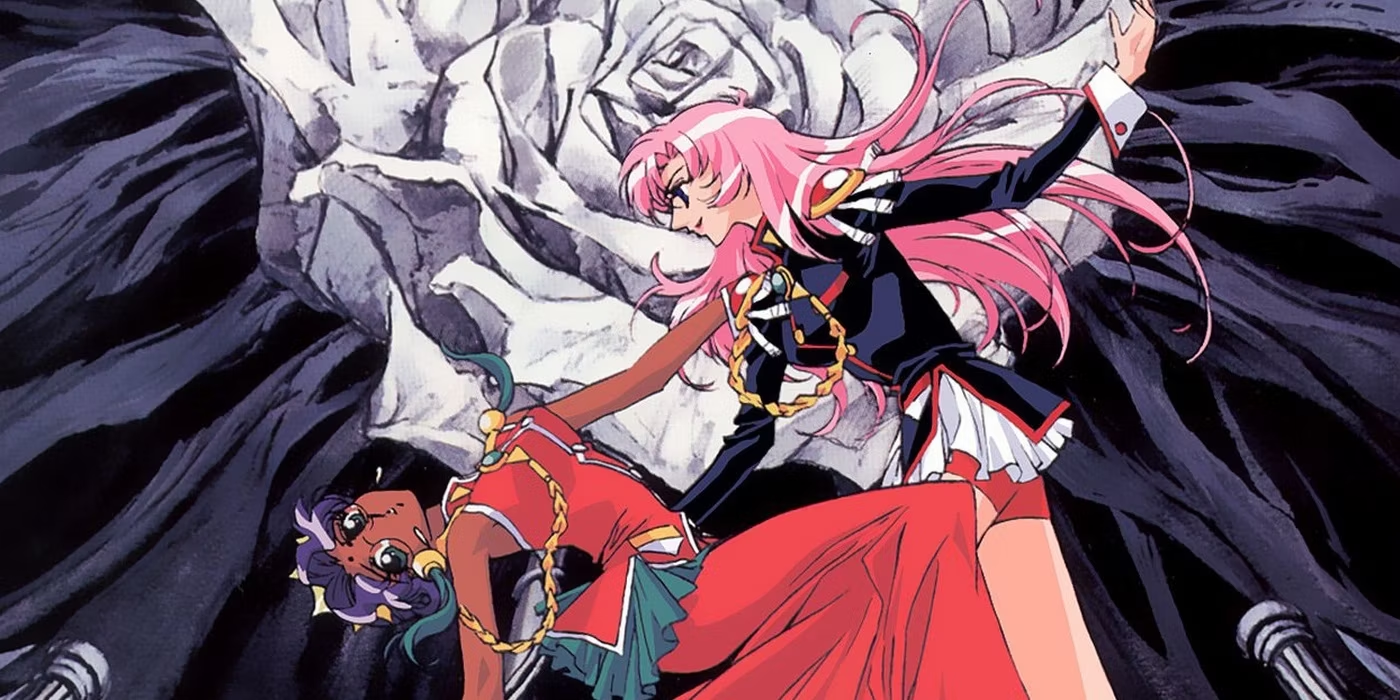
Power dynamics are central to the narrative, with the duels representing the struggle for control and dominance. The series critiques the ways in which power is wielded and abused, particularly in the context of patriarchy and institutional authority. The relationship between Utena and Anthy serves as a microcosm of these broader power struggles.
The concept of revolution is both literal and metaphorical in the series. Utena’s quest to revolutionize the world mirrors her internal struggle for personal transformation and liberation. The series suggests that true revolution begins with self-awareness and the courage to challenge oppressive systems.
The visual style of “Revolutionary Girl Utena” is striking and symbolic, characterized by surreal and abstract imagery. The use of recurring motifs, such as roses, swords, and castles, enhances the thematic depth of the series. The animation, with its bold color palette and dramatic compositions, creates an otherworldly atmosphere that complements the narrative’s surreal and allegorical nature.
The narrative style is nonlinear and often abstract, with a blend of psychological drama, fantasy, and philosophical discourse. The series employs a mix of episodic and overarching storytelling, with each duel serving as a vehicle for character development and thematic exploration. The use of repetition and ritual in the duels underscores the cyclical nature of power and control.
“Revolutionary Girl Utena” has been widely acclaimed for its innovative storytelling, complex characters, and thematic richness. It has been praised for its bold exploration of gender and sexuality, challenging traditional norms and offering a nuanced portrayal of queer relationships. The series has garnered a dedicated fanbase and remains a significant work in the canon of anime and manga.
The influence of “Revolutionary Girl Utena” extends beyond its immediate cultural impact, inspiring subsequent works in the genre and contributing to ongoing discussions about representation and narrative complexity in media. Its themes and stylistic choices have been analyzed in academic and critical contexts, cementing its status as a groundbreaking and enduring work.
“Revolutionary Girl Utena” is a masterful blend of fantasy, romance, and psychological drama that transcends conventional storytelling. Through its intricate narrative, compelling characters, and profound themes, the series offers a powerful exploration of identity, power, and revolution.
Whether you’re drawn to its striking visuals, its thought-provoking themes, or its emotional depth, “Revolutionary Girl Utena” is a work that continues to resonate and inspire, leaving a lasting legacy in anime and manga.
1. Nana
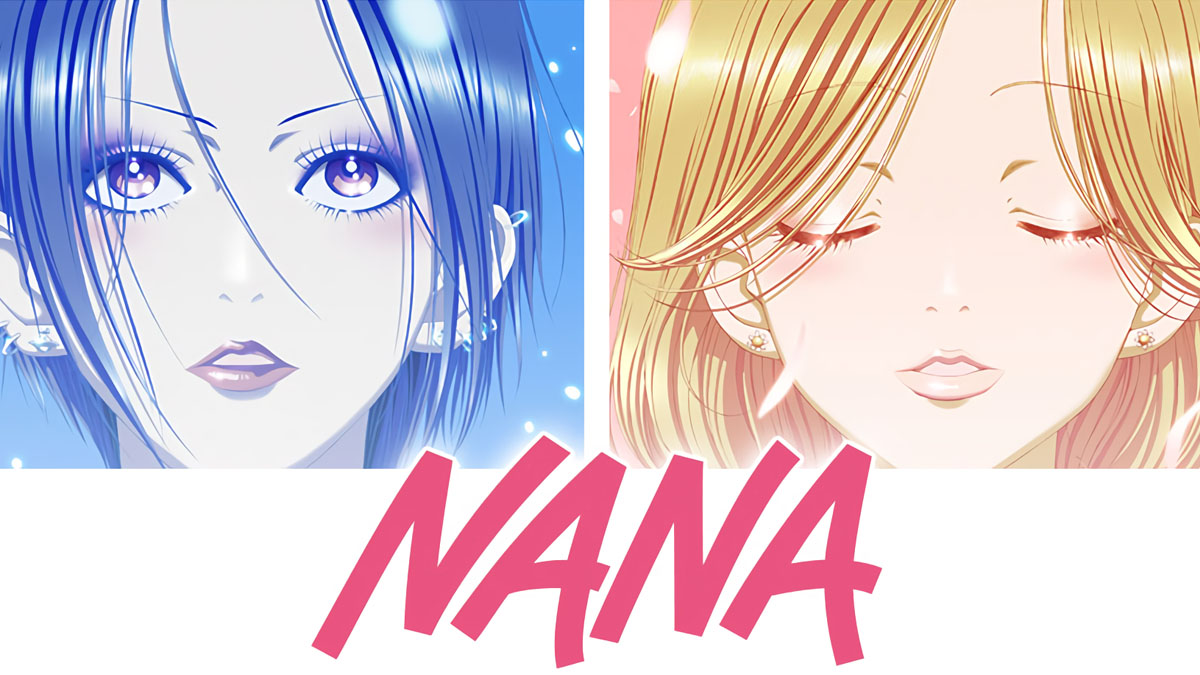
The intertwining lives of the innocent Nana Komatsu and the punk-rock vocalist Nana Osaki stand as one of the most iconic tales in all of shojo anime. Viewers are drawn into their world, empathizing with the characters as they navigate through the rollercoaster of romance, heartbreaks, and the myriad challenges that life presents.
While there are numerous exceptional romance anime, the story of Nana holds a special place. Its only drawback lies in its conclusion, as the manga was unfortunately put on hold indefinitely in 2009 due to the grave illness of its author, Ai Yazawa, and her challenging recovery. However, in 2022, there was a glimmer of hope as the mangaka provided an update on the potential continuation of the story.
Nonetheless, the anime remains a must-watch, offering 50 episodes of superb storytelling. Both main characters are intricately developed, and their personalities blossom beautifully through their genuine and relatable friendship.
“Nana,” created by Ai Yazawa, is a Japanese manga series that goes into the lives of two young women, both named Nana, who navigate the complexities of love, friendship, and aspirations. Serialized in “Cookie” magazine from 2000 to 2009, the series has entertained readers with its raw and emotional storytelling.
“Nana” was adapted into an anime series, and two live-action films, and remains a beloved classic that continues to resonate with fans around the world. The series is notable for its realistic portrayal of relationships and the music scene, as well as its exploration of personal growth and self-discovery.
The story begins with two young women, Nana Komatsu and Nana Osaki, who meet by chance on a train to Tokyo. Despite sharing the same name, their personalities and backgrounds are vastly different.
Nana Komatsu, often called Hachi due to her puppy-like demeanor, is a naive and optimistic girl from a small town, who moving to Tokyo to be with her boyfriend and seek a fresh start. Nana Osaki, on the other hand, is a strong-willed and ambitious punk rock singer, who moved to Tokyo to pursue her dreams of making it big with her band, Black Stones (Blast).
The two Nanas end up becoming roommates and develop a deep and complex friendship. As they support each other through their personal and professional struggles, the series explores their intertwined lives, the challenges they face, and the impact of their relationships with others. The narrative oscillates between their romantic entanglements, career pursuits, and the trials of their friendship, painting a vivid and poignant picture of young adulthood.
Nana Komatsu (Hachi): Hachi’s journey is one of emotional growth and self-discovery. Initially portrayed as dependent and somewhat directionless, she evolves through her experiences in Tokyo. Her relationships, especially with her boyfriends and her close friendship with Nana Osaki, shape her into a more resilient and self-aware individual. Hachi’s character embodies the struggles of finding one’s place in the world and the yearning for emotional fulfillment.
Nana Osaki: Nana Osaki is a fiercely independent and determined character, whose punk rock persona masks a vulnerable and sensitive side. Her backstory, including her troubled past and the loss of her first love, Ren Honjo, provides depth to her motivations and actions. Nana’s pursuit of success with her band Blast is central to her character, highlighting themes of ambition and the sacrifices made for one’s dreams. Her friendship with Hachi reveals her capacity for deep emotional connections and loyalty.
Supporting Characters: The series boasts a rich cast of supporting characters, each contributing to the narrative’s depth and complexity. Notable characters include:
Ren Honjo: Nana Osaki’s former lover and guitarist for the popular band Trapnest. His relationship with Nana Osaki is one of the series’ emotional cores, marked by passion, tragedy, and unresolved feelings.
Takumi Ichinose: The manipulative and charismatic leader of Trapnest, whose relationship with Hachi becomes a significant and contentious plotline. His character explores themes of power dynamics and control in relationships.
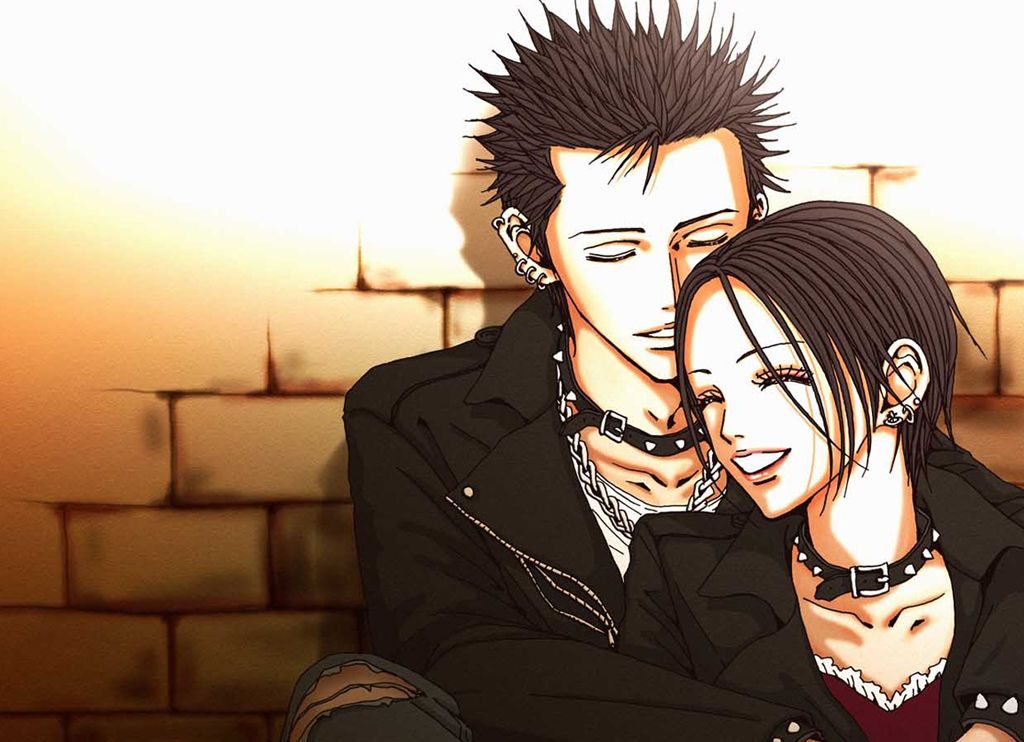
Nobuo Terashima: Blast’s kind-hearted guitarist, who develops feelings for Hachi. His character represents genuine affection and support, contrasting with the more tumultuous relationships in the series.
Shinichi Okazaki: the young and troubled bassist of Blast, whose backstory and personal struggles add layers of depth to the narrative.
The series portrays various facets of love, from romantic and passionate to platonic and familial. The relationships in “Nana” are often complex and fraught with difficulties, reflecting the real-world challenges of maintaining love and intimacy. The love triangle involving Hachi, Takumi, and Nobuo is particularly emblematic of the series’ exploration of love’s multifaceted nature.
The friendship between the two Nanas is the heart of the series. Their bond is portrayed with nuance and realism, capturing the highs and lows of deep companionship. The series emphasizes the importance of support, understanding, and loyalty in friendship, while also acknowledging the inevitable conflicts and misunderstandings that can arise.
Both Nanas are driven by their ambitions, though in different ways. Nana Osaki’s determination to succeed in the music industry and Hachi’s quest for emotional fulfillment and stability represent the diverse aspirations of young adults. The series explores the sacrifices and compromises that come with pursuing one’s dreams, as well as the impact of success and failure on personal identity.
Ai Yazawa’s artwork in “Nana” is characterized by its detailed and expressive style. The character designs are distinctive, capturing the personalities and emotions of each individual with precision. The fashion and aesthetics of the characters, particularly Nana Osaki’s punk rock style, add a unique visual appeal to the series.
The narrative style of “Nana” is both episodic and continuous, weaving together the personal stories of the characters with the broader plot developments. Yazawa’s storytelling is marked by its emotional depth and realism, often tackling mature themes with sensitivity and insight. The use of flashbacks and non-linear storytelling enhances the complexity and richness of the narrative.
“Nana” has received widespread acclaim for its compelling storytelling, well-developed characters, and emotional resonance. The series has been praised for its realistic portrayal of relationships and its exploration of themes relevant to young adults. Its impact extends beyond the manga itself, with successful anime and live-action adaptations further solidifying its place in popular culture.
The series has also influenced subsequent works in the genre, inspiring other creators to tackle similar themes of love, friendship, and ambition with the same level of depth and authenticity. “Nana” has garnered a dedicated fanbase and continues to be celebrated for its artistic and narrative achievements.
“Nana” is a powerful and evocative series that goes into the intricacies of love, friendship, and ambition. Through its rich character development, emotional storytelling, and striking artwork, the series offers a poignant and realistic portrayal of young adulthood.
Whether you’re drawn to its exploration of the music scene, its heartfelt relationships, or its themes of personal growth, “Nana” is a timeless classic that continues to resonate with readers and viewers alike. Its enduring appeal and cultural impact make it a must-read and must-watch for fans of manga and anime.
Memes of the Day
Pixiv 118248347
Young Padawan Pixiv Art 103514836
For full sauce search – Pixiv 118645174
Gyaru to Elevator ni Tojikomerareta
Circles
Seikatsu Shidoutou no Tenshi Marie | Angel Marie of the Holy Life Guidance Building [Neisan]
入社したらビッチな女先輩ばかりでハーレムになった。宅飲みで精液まで飲み干されることになった僕の話。
#510108
Yondara Gachi no Kaa-chan ga Kita Hanashi

